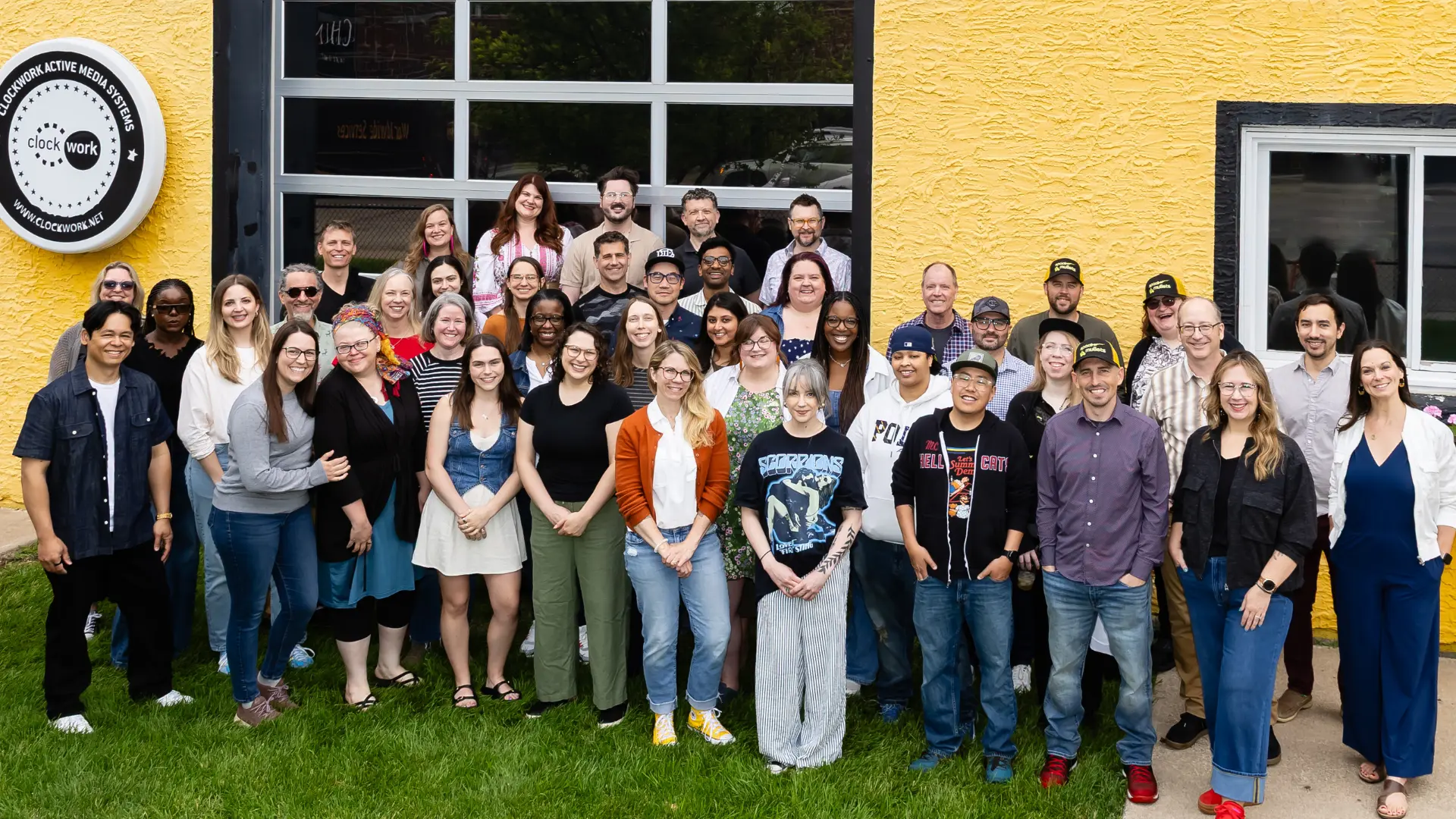Everybody’s talking about AI and we love the spirit of collaboration and knowledge-sharing that comes with it. As such, here are some ways folks at Clockwork have used AI to optimize our work:
Making web experiences more accessible
I’m intrigued by tools like ElevenLabs for text-to-speech and how it could enable clients to increase accessibility by adding audio versions to their blog posts.
Sam Gordon, Lead Product Designer
Understanding and visualizing data
I used ChatGPT to help me quickly understand the relationships between tables in an open source system so I could export data. It gave me starting points for queries and helped me revise them based on an evolving understanding of relationships between tables.
Jessica Zehavi, Senior Software Engineer
Adding on to Jessica’s usage, I used AI to quickly generate data queries. I then used it to help transform the data in Google Sheets. I went from zero to a line graph of usage numbers in 15 minutes.
Jed Anderson, Principal Software Engineer
Getting the TL;DR
I created a chatbot that reads and synthesizes PDFs using OpenAI’s API and an open-source GitHub project.
Vince Cabansag, Chief Operating Officer
Kickstarting ideas
I’ve used AI tools as a starting place for brainstorming. For example, “What are the areas or categories of X I should consider when planning Y?” ChatGPT can basically provide an outline or structure for any ideation, which helps limit oversights.
Nick Marcouiller, Client Strategist
I was having a hard time finishing an article so I asked ChatGPT for some content. Even though I didn’t use much of what it gave me, it was totally what I needed to get through a mental block.
Kasey Ross, Director of Change Strategy
Using AI as a building block for new tools
I built a headless React app that hits an API from a live WordPress site. It allows you to search projects and review a detailed page of each one.
Brian Renew, Senior Software Engineer
I’ve been collaborating with the Tempo team to create a tool that enables us to develop placeholder content that is much closer to a final product than what “Lorem Ipsum” traditionally provides. Our approach is to scrape and ingest content from existing website(s) into a database (like pinecone.io). Then, we provide the user a way to interact and input new brand information to influence the generation of new content inclusive of brand voice and tone.
Cassidy Nelemans, Senior Operations Engineer
Writing SEO-optimized content
I use ChatGPT to help me create keyword-dense and helpful meta descriptions for web pages. This practice can increase the likelihood a page may rank in search and it creates more engaging link previews for sharing.
Leigh Grueber, Marketing Operations Manager




